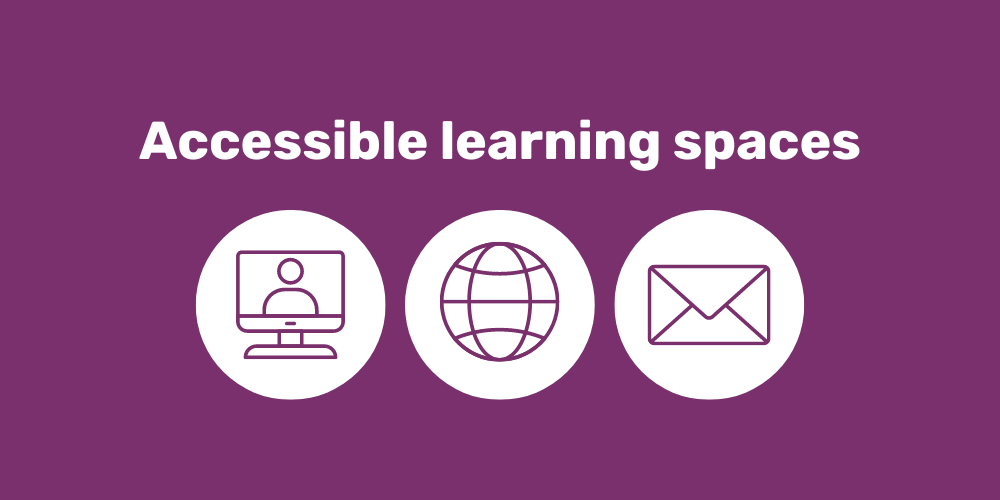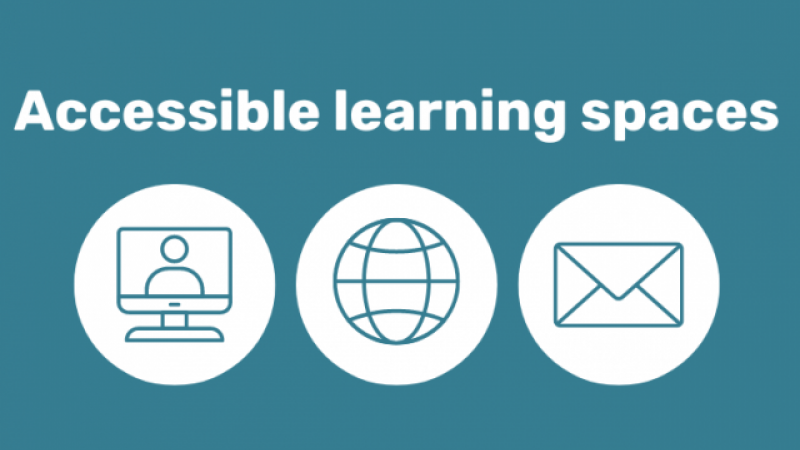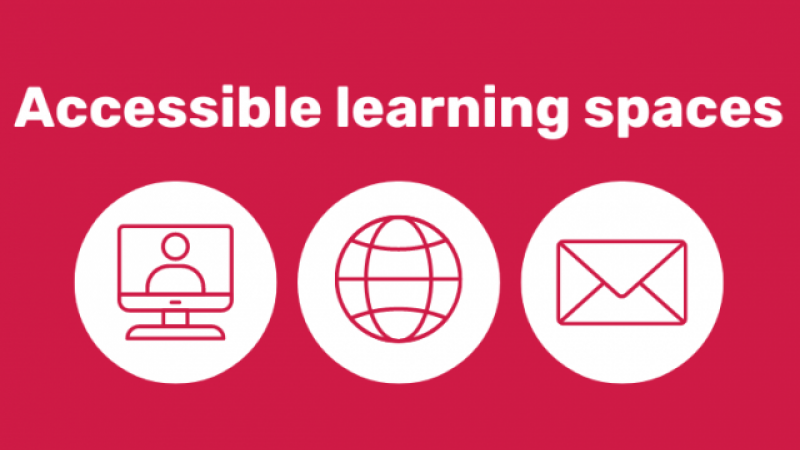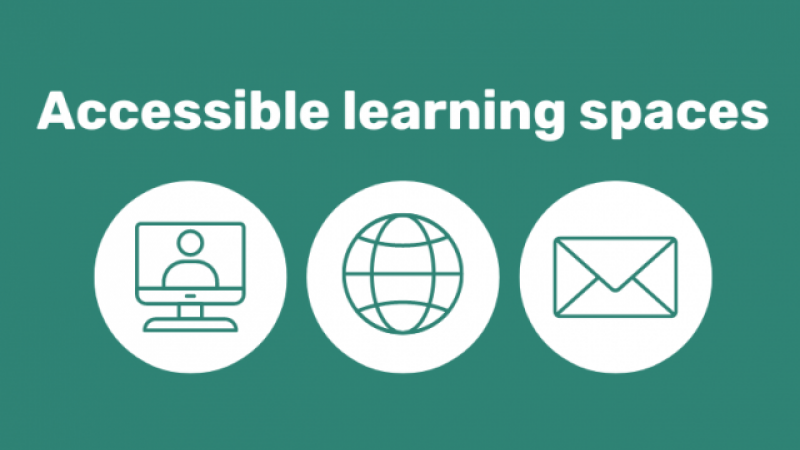
In this fourth instalment of our Accessibility series, we will look at the art of facilitation and how you can adapt your facilitation style to make your session more accessible and inclusive to wider audiences.
Adaptability is a superpower which makes a good facilitator, great!
Tools to increase accessibility
There are generally four main categories of tools and stratgies:
- Making documents accessible
- Assistive technologies
- Adaptive strategies
- Adaptive facilitation - the topic of this article.
What is adaptive facilitation?
Adaptive facilitation is all about being flexible and being able to pivot your delivery based on who is in your room and what their needs may be.
Adaptive facilitation
Adapting your facilitation style should start when you are planning your educational session. Considering who may be in your room and weighing up how you can best support them is integral to the success of your session. When advertising your session, invite learners to get in touch with you to discuss their specific learning needs.
Things to consider in your planning phase
- Ensure the facility and presentation area is accessible to all speakers and participants, including those with mobility impairments.
- Organise assistive listening devices such as hearing loops, interpreters, and captioners, if required.
- Provide multiple ways to learn so you address various learning styles. Mix it up by using lectures, group discussions, slides and other visuals, videos, question and answer sessions, hands-on activities, games, handouts, and references to resources.
- Ensure your hands-on activities are able to be completed by all learners in your group.
- Ideally provide attendees, sign language interpreters and real time captioners with your materials ahead of time and in an accessible format. See Part 1 Accessible Documents resource (Insert link here).
- Work with interpreters and captioners before your session to ensure they are familiar with your material, acronyms and what is expected of them.
- Remember to use large, sans serif, bold fonts, simple visuals on uncluttered pages with plain backgrounds.
- When designed slides and other resources use colour combinations that are high contrast and can be distinguished by those who are colour blind.
- Limit the amount of text on slides and use simple language.
Consider using a co-facilitator
Most facilitators deliver training material by themselves, but working with a co-facilitator has many benefits for both you and your learners.
Working with a co-facilitator will expose you to another way of working and may help to develop other skills that you can add to your training tool kit.
Co-facilitation
Co-facilitation can be helpful in providing a more inclusive learning environment. It:
- Provides you with the opportunity to leverage off the skill sets of each facilitator to reach learners, and add a variety of perspectives to your session.
- Helps to reduce the workload of a sole facilitator.
- Allows you to add more flexibility into the design of your session.
- It is helpful if you are training large groups of people.
- Allows you to watch and learn how another facilitator delivers material so you can add those skills to your own training tool kit.
- Can create a sense of curiosity for the learners as the session becomes more dynamic.
- Increases engagement and interaction for the learners. Helps to keep it interesting and keep learners on task.
- Team teaching, when done correctly, is energising for the learners and fun for the facilitators as you can freely move around the room.
- Is useful in case one facilitator misses a learner's comment, the other facilitator can highlight it and pose additional questions for the group to consider.
- Allows one facilitator to support learners during activities or to act as a scribe.
- Provides the opportunity for one facilitator to read the room and to provide feedback to the other facilitator in case both need to change their initial approach.
Top tip
When designing a co- facilitated session, make sure you both agree on how the session will flow, who will deliver which section and that you support each other during the delivery.
Delivery tips
These communication tips can help you in presenting and delivering an inclusive session as a facilitator:
- Ensure everyone has good visibility of the presenters, slides and this includes the sign language interpreters and real-time captioning.
- Position the computer screen in front of you to assist your delivery. This allows your voice to be carried forward towards your learners and allows those who lip read to do so.
- Speak clearly using simple language and at a steady pace.
- Check that the learners can hear and see you clearly.
- Give an outline at the beginning of the session so learners know what to expect.
- Give learners time to process new information and to ask you questions.
- Consider using a microphone for large groups.
- Deliver the key points but avoid reading word for word from the slides.
- Explain to the learners what they are seeing on the slides. For example, “We are now looking at a picture of a learner using an iPad”.
- Include relevant examples and spell acronyms or define words the group may not be familiar with.
- If you ask the learners a question and you want them to answer by raising their hands, the facilitator should describe out loud what the response is.
- Ideally use videos that have captions. You may also like to share a summary of the video content prior to showing it.
- Schedule regular breaks between the material you are presenting.
- Provide a summary or wrap of the session and refer to additional learning resources or opportunities.



